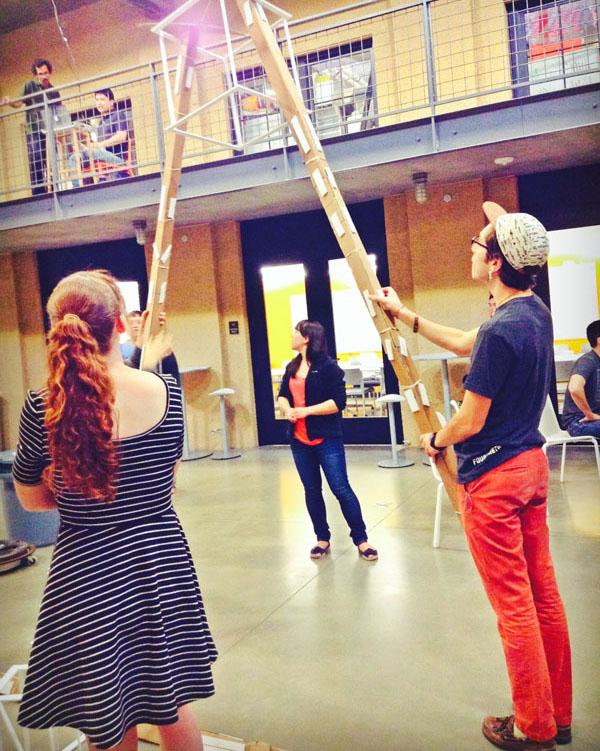Stanford University’s Hasso Plattner Institute of Design — known colloquially as the d.school — offers its graduate students courses that advocate an approach to problem solving with people at its center. The d.school’s guiding principle is simple: to ease lives.
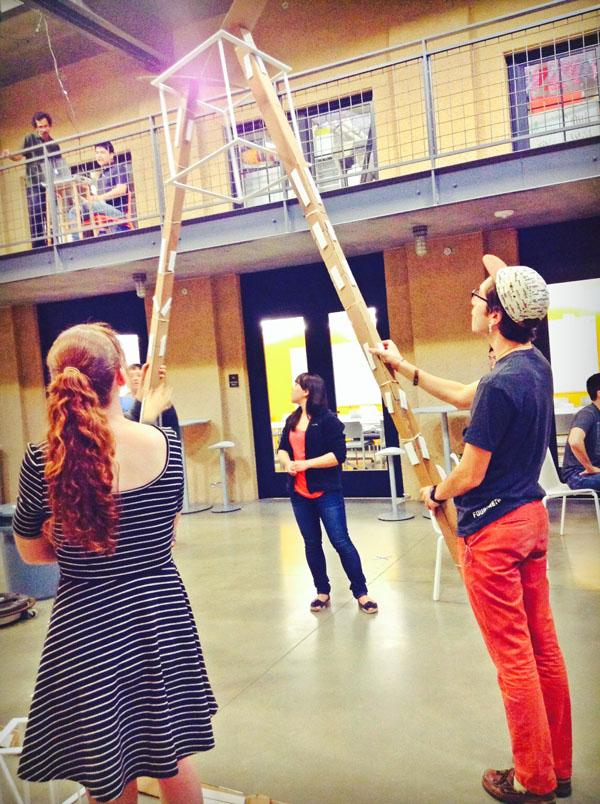
The d.school is at the leading edge of the “Empathy Revolution,” a movement to improve education around the world by forgoeing computer screens and spreadsheets to focus instead on the human experience.
Inside the self-proclaimed “hub for innovators,” no neat rows of desks are to be found. Students work instead in clusters, trained to face problems with what founder David Kelley calls “design thinking.”
“We don’t just ask our students to solve a problem, we ask them to define what the problem is,” says Bernard Roth, d.school co-founder and academic director. “The ‘d’ in d.school stands for ‘design,’ but it’s not really design that we teach here. We’re not creating designers; we’re creating design thinkers.”
Design thinking, or d.thinking, incorporates elements of design and engineering to create a near formulaic approach to developing costumer-oriented prototypes. At the d.school, students don’t design products— they design experiences.
As Roth describes, the heart of the d.school’s mission lies in solving real-world problems. Through its acclaimed program, Design for Extreme Affordability, often simplified to Extreme, it aims to do just that. In this two-quarter-long, multidisciplinary course, students enrolled in Extreme partner with nonprofit organizations to develop projects that cater to the needs of the world’s poor. Students visit developing countries and employ the d.thinking process to solve problems that their residents face, ending in products that save lives.
Last year, Ian Connolly and Jeffrey Yang of the Miraclefeet team created a brace that treats clubfoot, a common deformity that causes ankles to appear to have been rotated inward. Clubfoot affects more than a million children in developing countries who, without the help of the Miraclefeet brace, may never be able to walk, run, play or go to school.
The Miraclefeet brace now follows the legacy of many other d.school innovations that have met extreme success — ranging from a miniature pouch that prevents newborns from contracting hypothermia and has already prevented 22,000 infant deaths to a news-reading app that was acquired by LinkedIn for $90 million.

d.Empathy
A key component of d.thinking, Roth says, involves expanding beyond a “head-connection” in order to establish a “heart-connection” with the consumer, thus enabling students to identify and address the consumer’s desires. Call it empathy.
Connolly and Yang, in searching for examples to base their prototype on, experienced this empathizing process first hand, as they traveled to developing communities in Brazil and placed themselves in the young children’s shoes — almost literally.
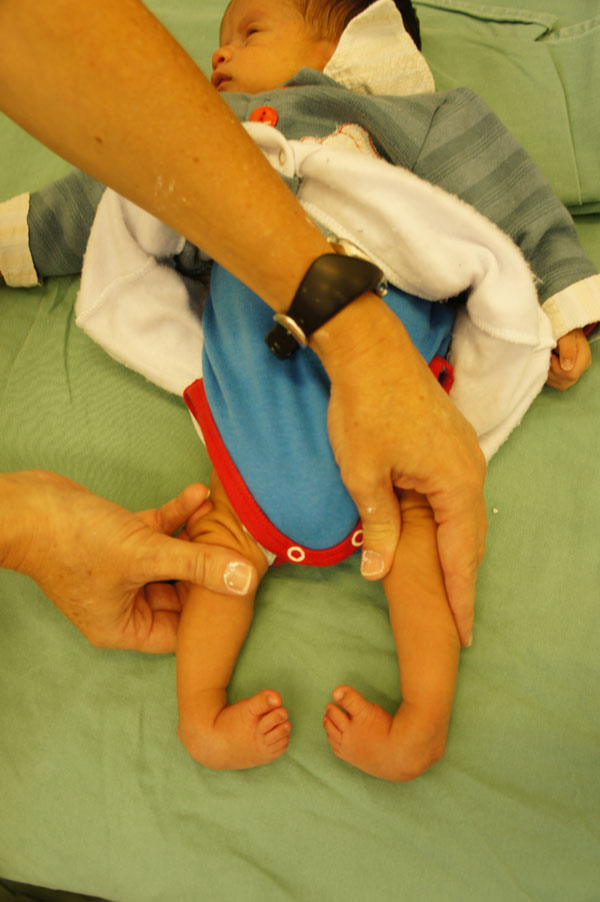
“We talked to the parents, the physicians, and some of the kids [with club foot] that were old enough.” Connolly says. “That was really great because those were our real users, and their lifestyles and financial situations were nothing like the average person here in the US. We did a couple of home visits, and the neighborhoods in general weren’t really that nice. We heard stories here and there of a mother and child traveling on the bus for several hours to get to the clinic, and not have the means to afford the braces.”
Connolly says that high-quality braces previously cost upwards of $500, and that lower-quality ones break every few days. Enter Miraclefeet brace, Connolly and Yang’s mission of which was to combine functionality with low cost.
d.Prototyping
The d.school encourages students to become active in problem solving — not just sitting around and debating, but working to get results. One way in which the d.school fosters this kind of collaboration is through the creation of prototypes. But, “don’t make them too precious,” Roth warns.
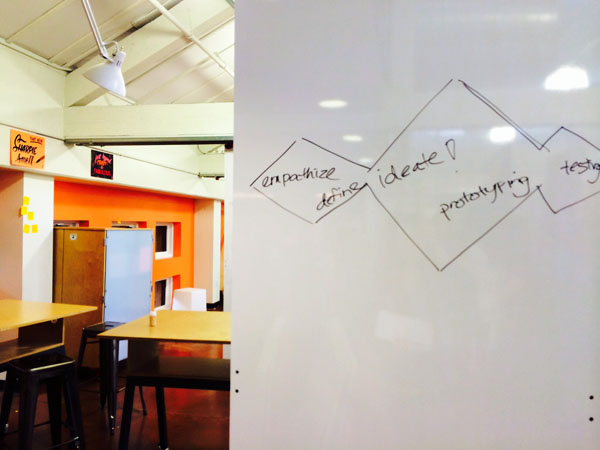
With a prototyping room full of supply boxes stocked with pipe cleaners, scissors and neon Post-It notes, students are encouraged to use simple materials to model rough prototypes quickly.
When Tania Anaissie, a d.school design researcher, was a graduate student, she was assigned to get people to eat healthy when their diet was at it’s worst: during periods of intoxication. Her initial prototype was nothing more than a wall-full of Post-Its directing drunk students toward a refrigerator stocked with carrots and hummus.
“But the students didn’t bite,” she says.
Even with the clearly healthier option in their line of sight, the students opted for quesadillas because they enjoyed the communal aspect of cooking, especially when drunk.
While observing her subjects, Anaissie found that the trial-and-error process of prototyping became the most enriching part of the design experience. The project gave her a window into the psychology of students’ eating habits, leading her to completely rethink her approach. And it only cost her 10 minutes and a stack of Post-It notes.
Similarly, when Connolly and Yang began building their initial prototypes, they used only simple materials, fashioning a shoe out of paper, a brace out of wood and the supporting structure out of foam core.
“We made more than 30 prototypes,” Connolly says. “It’s funny because the final prototype that we landed on was pretty close to one of the first prototypes that we made…you think you know where you are going to end up, but you really end up somewhere else.”
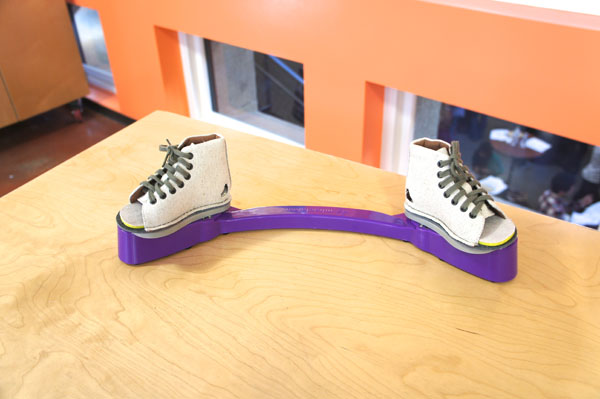
This year, Connolly and Yang have begun molding the final product, and plan to travel to clinics and test the products this March. Their goal is to produce 50,000 braces by the end of 2015.
“The beauty of Extreme is that it both educates people, and gets some stuff done that would be good to get done,” Roth says. “We focus on creating transformative learning experiences and, inevitably, the innovations follow.”
The d.school’s culture of constant innovation is what spurs its students to find problems in the perceived status quo, to reject what others have begun to accept as the norm.
According to Kelsey Dang, an undergraduate student majoring in product design, the Redesigning Theater team put on a spectacle of crazy shows in the d.school, creating a secret society with sword fighting and fire-blowing, to reshape how people think about theater.
“Everyone loves theater,” Dang says. “But what hinders the experience is sitting in chairs, and being confined for hours. The Redesigning Theater team saw a problem and fixed it.”
d.Ambiance
Inside the two-story complex, every inch of the d.school is designed with a few key concepts in mind: mobility, collaboration, and flexibility.
However, the d.school isn’t really a “school.” It doesn’t hand out degrees. It has no lecture halls, no classrooms and no blackboards — none of the elements of the classroom as we know it. This way, Roth says, students learn through innovation, not memorization.
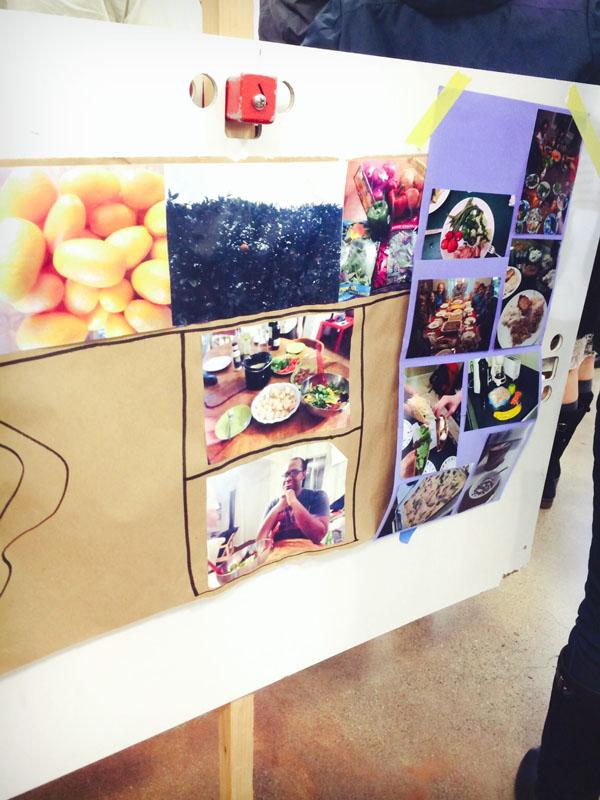
“Our hallmark is flexibility,” he says. “When I teach a class, I may change the class’s physical set-up two or three times in a two-hour class so that there is a way to work in teams, with a lot of students putting up Post-Its and writing on markerboards.”
The neon Post-Its have become a sort of physical mantra, encouraging collaboration by giving students the ability to add on to each other’s ideas and feed off of each other’s work.
“Its no-commitment stick allows for mobility,” Anaissie says.
The stools, Schmutte says, are purposefully designed to be slightly uncomfortable in order to get students moving, to get them engaged. That’s also why the tables have room only for four — four people, that is — not four laptops.
The d.school’s very walls speak of collaboration, made only of shifting markerboards that slide past one another to open doorways.

